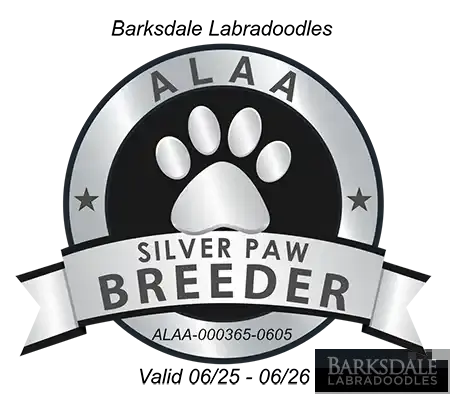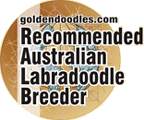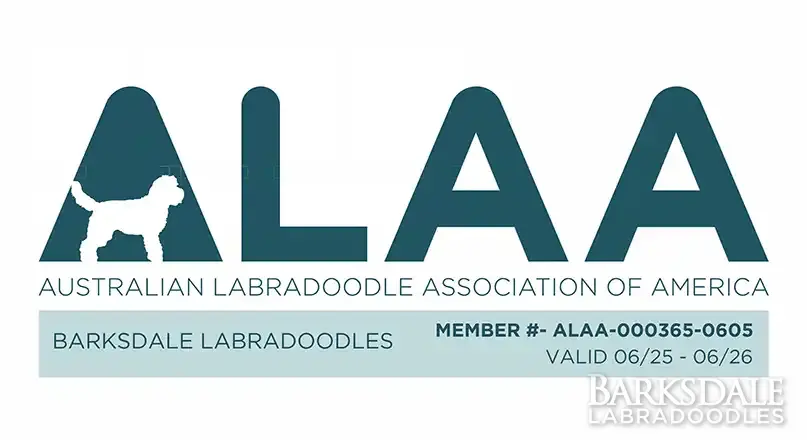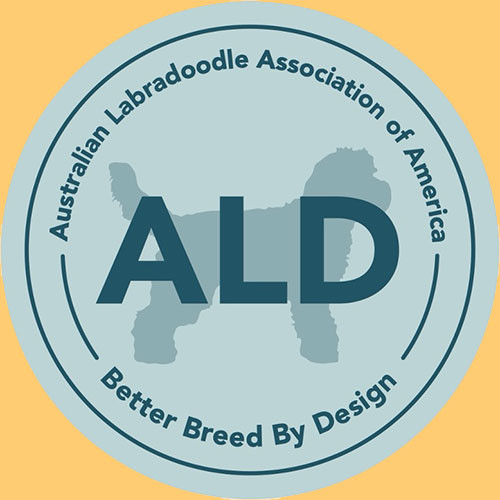Bijal P. Trivedi
Updated February 9, 2004
The Labradoodle, Yorkipoo, cockapoo, and schnoodle are the latest designer hybrid dogs to hit the catwalk.
Just as people meticulously customize a cup of coffee to suit their mood-a lowfat, decaf, mocha latte with chocolate sprinkles is particularly good-people are designing their pets to match their lifestyle.
The most popular breed of designer dog is the Labradoodle-originally a cross between a Labrador retriever and a poodle. The mix reputedly combines the intelligence, aloof nature, the delicate frame, and the low-allergy, and non-shedding traits of the poodle with the boisterous exuberance, lovability, and loyalty of a lab.
Humans began domesticating dogs about 14,000 years ago. Breeds emerged as dogs were selected for various traits like the ability to guard and hunt. Like the many breeds that have emerged since, the evolving Labradoodle also has a purpose: to provide an allergy friendly companion, especially to people with special needs.
Labradoodles originated in Australia in the 1970s when the Guide Dogs Victoria, in Kew, Australia, received a request for a low allergy guide dog. But their Labradoodle breeding program was largely abandoned because it produced inconsistent results. The breed also arose independently on the farm of Don Evans, who ran a mixed dog farm in Northern Victoria, Australia.
Trouble With Pure Breeds
“Don Evans loved his dogs but he bred everything and anything,” said Beverley Manners, a former German shepherd breeder for 30 years, licensed dog show judge, and currently the president of the Hawaii-based International Labradoodle Association, Inc. “If a bitch was in season and a male was interested, well, he just said, ‘why not.’ Don had bred poodles and labs together and had several second and third generation Labradoodles-that’s where I got my original stock.”
Labradoodle fever escalated when the Guide Dogs Victoria opened their doors and the general public spied the charismatic, wide-eyed, wavy-haired pooches. Many contacted Manners to locate Labradoodle breeders.
Manners was also intrigued with the Labradoodle-especially in light of rising allergy and asthma problems-and with the prospect idea of developing a new hybrid, free from the health issues facing the pure breeds.
“I was increasingly disheartened with breeding German shepherds,” said Manners. “These dogs, like other pure breeds of the show world had been bred for looks, and health was largely ignored. German shepherds, for example, are plagued with 89 inherited disorders.”
Top winning dogs are often highly inbred-siblings are interbred, and fathers are mated with daughters. The result is a tiny gene pool that is saturated with bad traits.
Manners began with dogs from Don Evans’ farm and has been breeding the doodles at Rutland Manor Labradoodle Breeding and Research Center, near Melbourne, for the last 15 years-carefully archiving genetic and health records for all the dogs. The center’s goal is to refine the breed to predetermine coat, color, size, and temperament of the puppies.
Designer Dogs-Passing Fad
But for all the excitement surrounding these new developing breeds, many skeptics dismiss designer dogs as a passing fad.
“Crossing breeds, adding a fanciful name, and charging outrageous sums for these dogs [labradoodles can cost up to U.S. $2,500] is a recent trend that’s only taken off in the last decade,” said Allan Reznik, editor-in-chief of Dog Fancy and Dog World, based in Irvine, California. “It’s indicative of a society that loves labels. Having a dog that is part spaniel and part poodle isn’t enough-it has to be a cockapoo.”
Many of the hybrid dogs are part poodle-the rationale is to create dogs that don’t shed. A Yorkipoo, cockapoo, and schnoodle are all part poodle and part Yorkshire terrier, cocker spaniel, and Schnauzer, respectively. But many pure breeds are also low or non-shedding, argued Reznik. The Labradoodle is not filling a niche that isn’t occupied by several pure breeds, he said.
Hybrids are also not always healthier than purebreds, Reznik said. Many reputable breeders are now using genetic tests to ensure they produce animals free from diseases that muddy their breed.
Can anyone create a new breed? Could a Dandie Dinmont terrier be bred with a pharaoh hound to produce a Dandie pharaoh?
Creating a New Breed
Yes and no, said Manners. Not all hybrids are a good idea, and unfortunately the designer dog phenomenon has unleashed a surge of amateur breeders who lack credentials and genetics expertise.
For a breed to be successful there needs to an educated match, said Manners. Crossing a pug with a Pekingese, for example, could produce disastrous consequences.
Both breeds have eyes that easily pop out of the socket to rest on the cheek. Surgery is required to fix the injury, often at the cost of the dogs’ sight. Breeding the two could yield a dog that literally has its eyes falling out, said Manners.
A Newfoundland and a Saint Bernard could generate a crippled giant-both of these breeds are plagued with hip dysplasia, a genetic disorder that often requires hip replacement before the dog is one year old.
Despite the stigma faced by hybrids, they are not barred from eventually becoming pure breeds.
From Mutt to Pure Breed
In order to make the leap from a lowly mutt to a pure breed officially recognized by the American Kennel Club (AKC), the breed must satisfy a number of criteria. There must be at least 300 Labradoodles within the U.S. and distributed among at least 20 states. The dogs must have a National Breed Club demonstrating interest, and there must be at least a three generation pedigree-three generations of Labradoodle-to-Labradoodle matings.
The new breed must also have predictable characteristics and fulfill a specific purpose, said Daisy Okas, a spokesman for the AKC, based in New York City. Breeds classified in the “Toy Group” category, for example, were developed to be small, charming companions. So a low-allergy buddy doesn’t seem so far fetched.
The AKC currently recognizes 150 breeds; the Labradoodle is a work in progress, and is not yet a recognized breed in the U.S. or Australia.
“My goal is to create the best, healthiest breed I can that will be allergy friendly, with a non-shedding low maintenance coat, and that will have a mellow temperament, and be intuitive and easy to train,” said Manners. “The Labradoodle is the ultimate-I wouldn’t go beyond it.”
Originally published on nationalgeographic.com/channel.









